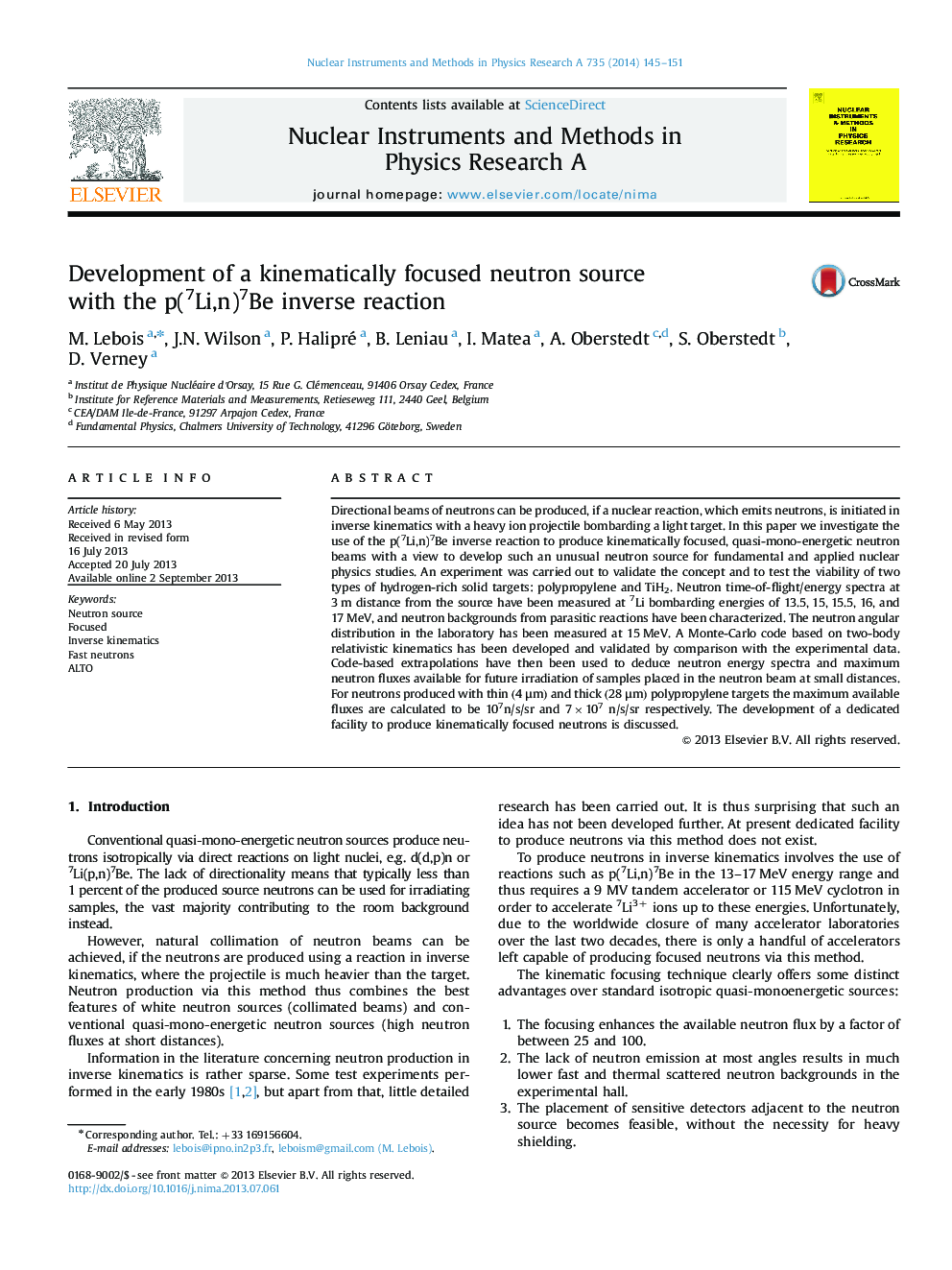| Article ID | Journal | Published Year | Pages | File Type |
|---|---|---|---|---|
| 8177843 | Nuclear Instruments and Methods in Physics Research Section A: Accelerators, Spectrometers, Detectors and Associated Equipment | 2014 | 7 Pages |
Abstract
Directional beams of neutrons can be produced, if a nuclear reaction, which emits neutrons, is initiated in inverse kinematics with a heavy ion projectile bombarding a light target. In this paper we investigate the use of the p(7Li,n)7Be inverse reaction to produce kinematically focused, quasi-mono-energetic neutron beams with a view to develop such an unusual neutron source for fundamental and applied nuclear physics studies. An experiment was carried out to validate the concept and to test the viability of two types of hydrogen-rich solid targets: polypropylene and TiH2. Neutron time-of-flight/energy spectra at 3 m distance from the source have been measured at 7Li bombarding energies of 13.5, 15, 15.5, 16, and 17 MeV, and neutron backgrounds from parasitic reactions have been characterized. The neutron angular distribution in the laboratory has been measured at 15 MeV. A Monte-Carlo code based on two-body relativistic kinematics has been developed and validated by comparison with the experimental data. Code-based extrapolations have then been used to deduce neutron energy spectra and maximum neutron fluxes available for future irradiation of samples placed in the neutron beam at small distances. For neutrons produced with thin (4μm) and thick (28μm) polypropylene targets the maximum available fluxes are calculated to be 107n/s/sr and 7Ã107 n/s/sr respectively. The development of a dedicated facility to produce kinematically focused neutrons is discussed.
Related Topics
Physical Sciences and Engineering
Physics and Astronomy
Instrumentation
Authors
M. Lebois, J.N. Wilson, P. Halipré, B. Leniau, I. Matea, A. Oberstedt, S. Oberstedt, D. Verney,
